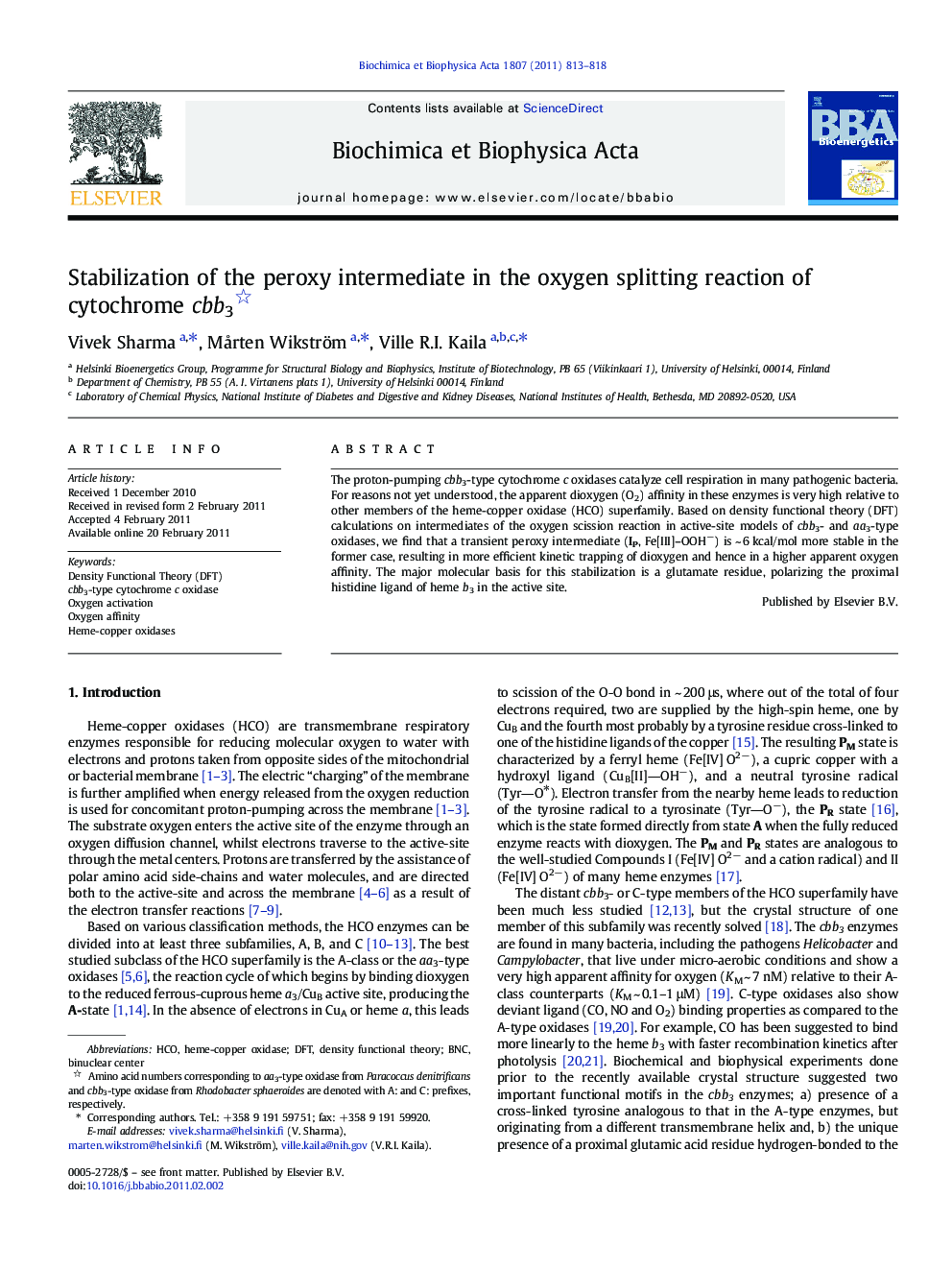| Article ID | Journal | Published Year | Pages | File Type |
|---|---|---|---|---|
| 1942725 | Biochimica et Biophysica Acta (BBA) - Bioenergetics | 2011 | 6 Pages |
The proton-pumping cbb3-type cytochrome c oxidases catalyze cell respiration in many pathogenic bacteria. For reasons not yet understood, the apparent dioxygen (O2) affinity in these enzymes is very high relative to other members of the heme-copper oxidase (HCO) superfamily. Based on density functional theory (DFT) calculations on intermediates of the oxygen scission reaction in active-site models of cbb3- and aa3-type oxidases, we find that a transient peroxy intermediate (IP, Fe[III]–OOH−) is ~ 6 kcal/mol more stable in the former case, resulting in more efficient kinetic trapping of dioxygen and hence in a higher apparent oxygen affinity. The major molecular basis for this stabilization is a glutamate residue, polarizing the proximal histidine ligand of heme b3 in the active site.
Graphical abstractFigure optionsDownload full-size imageDownload high-quality image (54 K)Download as PowerPoint slideResearch highlights► The high oxygen affinity of cbb3-type oxidases is studied by DFT calculations. ► A stabilization of a peroxy intermediate is found relative to aa3-type oxidases. ► A conserved glutamate polarizes the active site heme in the cbb3-enzyme. ► An electrostatic perturbation result in an efficient kinetic trapping of dioxygen.
